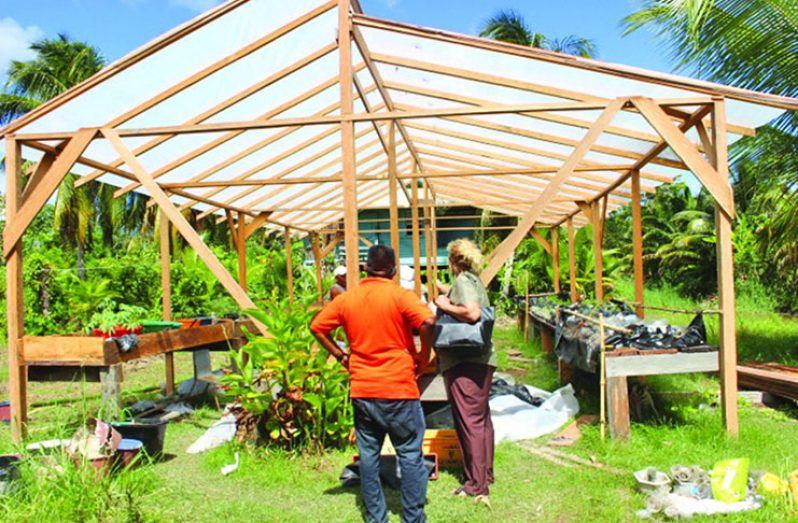–Region 5 farmer encouraging colleagues ‘to go climate-smart’
FARMERS from across the country record tangible losses every year during the rainy season, and even during extremely hot periods.
But Dhaniram Ramchand, a 38-year-old farmer of Region Five (Mahaica-Berbice) is trying to sensitise his counterparts on a way to reduce their losses.
As touted by many institutions, particularly the Office for Climate Change, farmers need to adopt a more “climate-smart” approach to agriculture, especially now that the changes in weather patterns have become unusual because of global warming.
Dhaniram, of Bath Settlement, West Coast Berbice, is one of the famers who has started the process of changing the way he cultivates his crops.
Instead of the traditional open-air farming, the innovator has implemented shadehouse and greenhouse systems to protect his crops from the harsh weather patterns which are seemingly becoming unpredictable.
Dhaniram told this publication that in the past, farmers were able to predict the seasonal weather patterns. But now, because of climate change and global warming, it is becoming difficult, so they get long periods of rain or sun when they least expect it.
“Sometimes we get one week rainfall, which brings everything down; and then a next time we get extreme heat. So I choose to be prepared for both,” he said.
Dhaniram explained that his greenhouse has an Ultra Violet (UV) plastic, which reduces the sunlight which reaches the crops by almost 50 per cent. The same systems also protect the crops from excessive rainfall.
In addition, those farmers who utilise the greenhouse and shadehouse methods reportedly make double the money in profits, because they produce for an entire year as compared to four to five months a year with open-air farming.
According to Dhaniram, the protective abilities of the greenhouse method results in the yield being doubled as compared to the open-air farming. Many farmers rate the greenhouse systems as more effective because of those reasons.
He plants tomatoes, lettuce, celery, and bell peppers among other things, but he believes that anything can be planted with the use of the greenhouse and shadehouse systems.
ON THE MOVE
Dhaniram is, however, on the move to help other farmers in the area, and even those in Region Six (East Berbice-Corentyne) to get the same results as he.
Every month, the farmer takes a trip to Region Six, where he sells seedlings. But his crusade does not stop there; he also uses the opportunity to sensitise farmers on the benefits of shadehouse and greenhouse farming.
Farmers in Region Five have also benefitted from the advice and guidance they get from Dhaniram. A young farmer from Bath Settlement, who goes by the name of Vick, said he installed the same systems after hearing about their benefits and the efficiency.
Reports had, however, indicated that although the notion of “going green” is reportedly the best solution to mitigating the effects of the global change in climatic conditions, experts say once the right methods of farming are not employed, more greenhouse gases can be emitted.
Executive Director of Global Economic Cooperation, Trade and Investment within the Ministry of Foreign Affairs, Mr Rawle Lucas, reportedly addressed the harmful effects of chemical fertilisers to both land and air because of the gases they emit. “Agriculture is contributing to 24 per cent of the greenhouse gas emissions around the world,” Lucas said.
“We are not doing anything different from those other countries, so it is clearly an issue for us to focus on,” he added.
He pointed to the urgent need for farmers to do things differently; to recognise and change their current methods of production, as it cannot work any longer.
His comments were particularly directed at those who have a marked preference for fertiliser use in rice production. It was outlined that the fertiliser is not “ozone-friendly”, and therefore there is need to negotiate with farmers locally and from other countries to accept the changes that are necessary.
Specialists say that climate-smart agriculture is a business model that increases agricultural output, while maintaining, or lowering, amounts of inputs, such as land, water or fertiliser.



.jpg)









